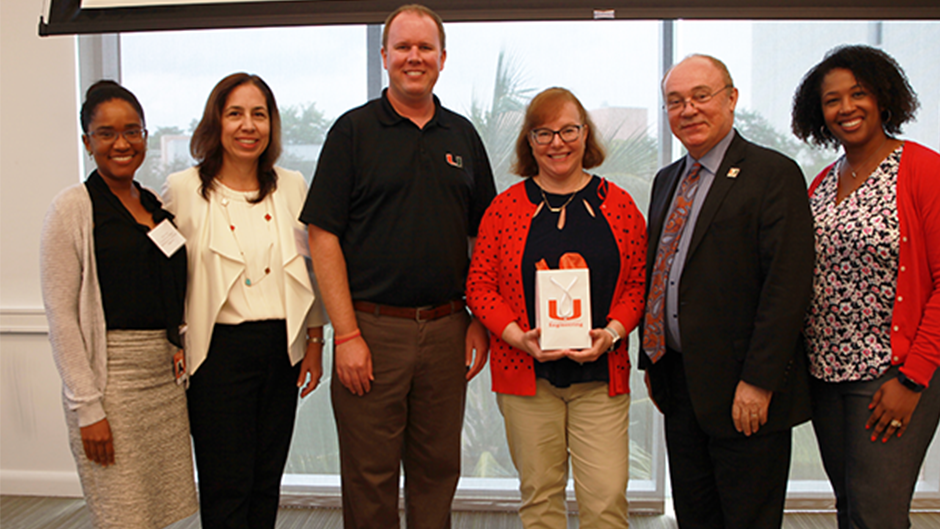Today’s diverse university classrooms offer tremendous opportunities for students and faculty to benefit from new perspectives, more creative approaches to problem-solving, greater innovation and the chance to develop multicultural competencies that will serve them well throughout their careers. But to truly enjoy the benefit of the diversity that is woven into the fabric of the University of Miami College of Engineering (UM CoE), faculty and staff must create environments that are inclusive for all students. This requires honing new competencies.
On Monday, May 13, the CoE hosted an innovative event that examined how faculty and staff can best serve the needs of their diverse student populations, titled, “Everyone Belongs: Creating a Diverse and Inclusive Learning Environment.”
“I have taken away a lot that I can use with my students about their individualities and the unspoken needs that they have,” says Vincent K. Omachonu, professor and chair of the CoE’s Department of Industrial Engineering.
Through a series of hands-on exercises, participants explored ways to create safe and inclusive classrooms for students from a wide variety of backgrounds. Guest presenters Miriam Lipsky, UM’s assistant provost for the Office of Institutional Culture, Chris Hartnett, senior learning and facilitation specialist for the UM Office of Institutional Culture and Renee Dickens Callan, director of programs for the Office of Multicultural Student Affairs, shared a variety of strategies and techniques that faculty and staff can use.
The first lesson introduced the concept of social identity profiles. Tables with different identifiers (e.g., race, gender, religion/spirituality, etc.) were spread around the room; participants selected the profile they most identified with and discussed their reasoning for doing so. Faculty and staff gained an understanding of how to discern a student’s social identity profile and why it is important.
Participants also learned to understand microaggressions – everyday verbal, nonverbal, and environmental slights, snubs, or insults, whether intentional or unintentional, which communicate hostile, derogatory, or negative messages to target persons based solely upon their marginalized group membership – and how to be mindful of how students feel in their classrooms and at the University as a whole. For example, the speakers shared that it’s best to avoid asking where students are from when they first meet them, because students may not feel comfortable answering, due to the current economic or political climate. Instead, the speakers suggested asking students to introduce themselves and give a fun fact instead. The group also discussed using a student’s preferred pronoun (e.g. she/her/hers, he/him/his and they/them/theirs) as a way to make them feel included.
The event concluded with a student personas activity. Attendees were given a “student scenario,” decided what challenges students face in the classroom and discussed what they can do to make sure students feel like they belong.
All activities allowed for the faculty and staff members to bounce ideas off of each other and gain new perspectives on how people are perceived as a result of their culture, background, gender, religion and more. All activities opened the door for participants to foster inclusive environments and further the University’s culture of belonging.
“Creating a diverse and inclusive environment in our classrooms is not static. It requires continuous reflection, and deep commitment over time,” says Renee Evans, senior instructional designer with the College of Engineering. “Making small incremental changes to be more inclusive can have a big impact over the long term.”

